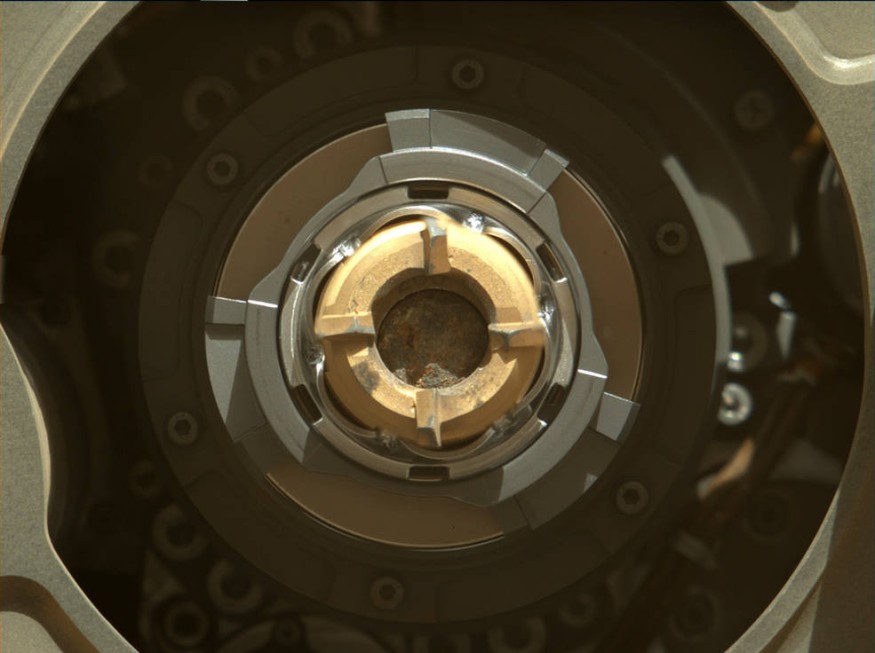NASA's Mars Perseverance rover successfully bored into a Martian rock on Thursday. The drilling resulted in an undamaged core sample that might be returned to Earth in the future. However, before the piece is sealed and placed on the rover, the space agency needs better photos to ensure its safety in the tube.
Perseverance bored through a rock chosen by the mission's science team. The first pictures and the data transmitted back by the rover show an undamaged sample in the tube.
After the initial pictures, the rover shook the drill bit and tube for five one-second bursts to remove any remaining material from the tube's exterior. This led the sample to slip further down within the tube.
Perseverance Rover Chief Engineer Adam Steltzner noted on Twitter the one "beautifully perfect" sample.
Now that is one beautifully perfect cored sample, if I do say so myself! Be patient, little sample, your journey is about to begin. #SamplingMars https://t.co/jOtNGKjeAe
— Adam Steltzner (@steltzner) September 2, 2021
The rover is carrying 43 similar tubes, Business Insider said. So NASA expects this is the first of many.
NASA To Take Better Photos of Sample
In a statement, NASA said that the photos obtained after were unresolved due to poor light conditions. Before doing the next phases of the sampling process, the agency said that Perseverance will utilize its cameras to capture more pictures in improved lighting circumstances.

After Perseverance tried to drill into a different rock target on August 5, the extra step of collecting more pictures before sealing and stowing the sample tube was introduced. The rock shattered during that effort, and there was no sample in the tube after it was kept.
ALSO READ : Earth's Largest Martian Rock on Display: See It up Close and Personal in Maine Starting September 1
NASA's Jet Propulsion Laboratory's mission project manager Jennifer Trosper said per The New York Times that the project obtaining its first cored rock beneath its belt is already an extraordinary accomplishment. She noted that the crew chose and cored a feasible and scientifically useful rock after determining a location.
According to Trosper, they completed the task at hand. She added that they will get past that minor snag with the illumination in the photos and remain optimistic that there is a sample in the tube.
The rover typically uses its rotary percussive drill to drill rocks and a hollow coring bit, collecting samples a little thicker than a pencil. This sample device is attached to the rover's robotic arm, 2.1 meters (7 feet) long.
Perseverance Now In Jerezo's Citadelle Region
Perseverance is currently investigating the Citadelle area in the Jezero Crater, which was initially the site of an ancient lake billion of years ago, Space.com said. The rover's precise objective was Rochette, a rock the size of a suitcase that belongs to a half-mile ridgeline of boulders and rock outcrops.
By September 4, the mission crew should have more photos of what is inside the sample tube. If pictures taken when the sun is at a better angle do not reveal if a sample is there, the tube will be shut and the volume measured by the rover.
If Perseverance collects samples from Mars successfully, they will be delivered to Earth by later missions. They might indicate if life indeed happened on Mars.
RELATED ARTICLE : NASA's Perseverance Rover Does Not Just Search for Rocks, Dust on Surface of Mars; It Spots Deimos, the Tiny Martian Moon, Too!
Check out more news and information on Space in Science Times.










